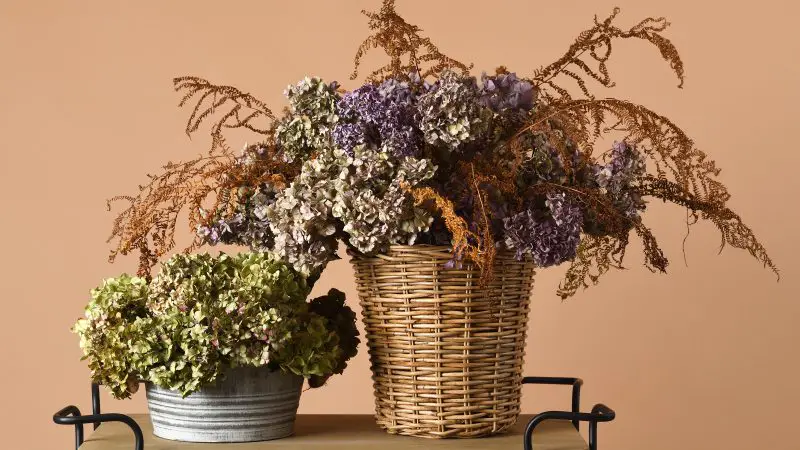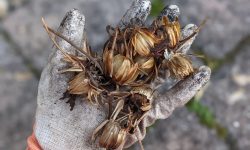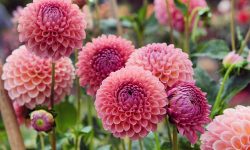Introduction: Why Drying Hydrangeas Is a Garden Lover’s Dream
Hydrangeas are known for their lush, cloud-like blooms and mesmerizing shades of pink, blue, white, and green. Their charm is undeniable in the garden, but what makes them even more special is their ability to be preserved long after the growing season ends. Dried hydrangeas not only retain their visual appeal, but they also offer a timeless elegance when used in wreaths, home decor, bouquets, and crafts.
Drying hydrangeas might seem like a delicate process, but it’s surprisingly simple if you know the right timing and technique. Whether you want to keep the soft blush of a mophead bloom or the striking structure of a panicle flower, this guide will show you how to dry hydrangeas perfectly while maintaining both their color and shape for months—even years.
Understanding the Best Time to Harvest Hydrangeas for Drying

Why Timing Matters
The key to beautiful dried hydrangeas starts with harvesting them at the right stage. Cutting them too early can lead to blooms that wilt, shrink, or turn brown as they dry. On the other hand, if you wait too long, the petals may become too brittle or lose their vibrant hue.
The ideal time to cut hydrangeas for drying is when the blooms have matured but still retain their form and color. This often happens in late summer to early fall, depending on your climate and the variety you’re growing. At this stage, the petals will feel slightly papery or leathery to the touch. They should no longer be soft and fresh, but not yet dry or crisp. The colors may begin to fade into antique tones, such as dusty pink, sage green, or silvery blue—this is exactly when they are most suitable for drying.
Choosing the Right Hydrangea Varieties for Drying
Which Types Dry Best
While most hydrangeas can be dried, some varieties perform better than others in terms of shape retention and color preservation. Bigleaf hydrangeas, with their rounded mophead flowers, are a popular choice due to their full, voluminous appearance. Panicle hydrangeas, known for their cone-shaped blooms, also dry well and often maintain structure and subtle tones beautifully.
Smooth hydrangeas, such as ‘Annabelle,’ can be dried, but their thinner petals and looser structure mean they may not hold up as well as other types. Oakleaf hydrangeas add textural variety and often dry with interesting coloration, especially in autumn when their hues shift naturally.
Knowing your hydrangea type will help you anticipate the drying result and choose the best use for your preserved blooms—whether it’s an indoor arrangement, holiday decor, or a rustic bouquet centerpiece.
Preparing Hydrangeas for Drying
Cutting and Conditioning the Stems
Once you’ve identified the perfect blooms, it’s time to harvest them. Choose a dry day, preferably in the late morning, after any dew has evaporated but before the heat of the afternoon sun sets in. Use clean, sharp pruning shears or scissors to make a clean cut below a node, leaving a stem long enough for arranging later—typically around 12 to 18 inches.
After cutting, remove any leaves along the stem. Leaves retain moisture and are prone to wilting or molding, so it’s best to strip them completely before drying. If you plan to air-dry your hydrangeas, bunching several stems together with a rubber band or string will make hanging easier. For other methods, keeping the stems separated may be preferable.
Method One: Air-Drying Hydrangeas the Traditional Way
Step-by-Step Process
Air-drying is the most classic and widely used method for preserving hydrangeas. It requires no special tools or materials and works beautifully when done correctly.
Hang the flower stems upside down in a dark, dry, and well-ventilated area such as an attic, closet, or spare room. The darkness helps preserve color, while good airflow reduces the chance of mold. It’s best to keep them away from direct sunlight or humidity, which can cause petals to fade or curl.
Drying typically takes between two to three weeks, depending on conditions and the thickness of the blooms. You’ll know your hydrangeas are fully dried when the stems are stiff and the petals feel crisp but still retain their form. At this point, you can display them as desired or store them for later use.
Method Two: Drying Hydrangeas in Water for Better Color Retention
Why This Method Works
One of the simplest yet most effective ways to dry hydrangeas while preserving their subtle color is the water-drying method. It might sound counterintuitive, but letting the blooms slowly dry in water helps reduce shock and allows petals to retain their hue more gently.
To do this, place freshly cut stems in a clean vase filled with about one to two inches of water. Position the vase in a cool, shaded room away from direct sunlight or heat sources. Over the next one to two weeks, the water will gradually evaporate, and the flowers will dry out in place. This process results in more muted yet elegant tones that can last beautifully in floral arrangements.
Avoid refilling the water or moving the flowers once placed. Minimal disturbance during this stage helps maintain the bloom shape and petal position.
Method Three: Using Silica Gel for Precise Color and Shape
A Technique for Preserving Perfection
For those who want near-flawless dried hydrangeas with vibrant color and natural shape, silica gel is the go-to method. While more time-consuming and a bit costlier, it’s ideal for special floral crafts, wedding keepsakes, or decorative projects.
Begin by choosing a plastic or glass container with a tight-fitting lid. Pour a base layer of silica gel (available at craft stores) into the container, about an inch thick. Carefully place the hydrangea bloom, face-up, into the gel. Then gently pour more silica around and over the petals until the flower is completely covered. Seal the container and store it in a dry, room-temperature place for five to seven days.
After drying, remove the flower carefully, brushing away excess silica with a soft brush. The results are stunning—petals remain vibrant and full, often looking as fresh as the day they were cut. While this method takes a little more effort, the payoff is professional-quality dried flowers with long-term durability.
Preserving the Shape and Color of Dried Hydrangeas
How to Keep Blooms Looking Beautiful
Once your hydrangeas are dried, protecting their color and form becomes the next priority. Exposure to sunlight can fade colors quickly, while humidity may cause petals to soften or even mold. To maintain their appearance, always display dried hydrangeas in indoor spaces away from windows, bathrooms, or kitchens where moisture is common.
If desired, you can apply a light coating of floral sealant or hairspray to the dried blooms. This helps reduce dust buildup and provides a slight barrier against fading and brittleness. Hold the spray about twelve inches away and apply in short bursts, rotating the flower to coat all angles.
Handling dried hydrangeas gently is key. They are more delicate than fresh blooms and can crack or shed petals with rough treatment. When storing, wrap them loosely in tissue paper and place them in a sturdy box in a dry, cool space.
Creative Uses for Dried Hydrangeas
Decorating and Gifting Ideas
Dried hydrangeas are incredibly versatile and can be used in countless creative ways around your home. One of the most popular uses is in floral arrangements for vases, where their vintage texture and muted tones add sophistication and charm.
They also make excellent additions to seasonal wreaths—especially fall and winter ones. Combined with dried grasses, berries, or eucalyptus, hydrangeas can serve as the focal point of a wreath hung on a front door or interior wall.
Another beautiful use is in shadow boxes or glass domes, where the flowers are preserved as decorative keepsakes. These displays make thoughtful gifts or memorials, especially if the hydrangeas were harvested from a special garden, wedding bouquet, or anniversary arrangement.
Craft enthusiasts often use dried hydrangeas in scrapbooks, journals, or handmade cards. Pressing the petals flat allows them to be used as delicate embellishments, adding a soft, botanical touch to paper crafts.
Troubleshooting Common Drying Mistakes
What to Avoid for Best Results
Drying hydrangeas is generally easy, but a few common mistakes can ruin your efforts. Cutting the flowers too early is the most frequent issue. Immature blooms collapse as they dry and may turn brown or shrink unnaturally. Always wait until the petals begin to feel papery before harvesting.
Another issue is drying in direct sunlight, which often leads to significant color loss. Bright pinks may fade to beige, and blues can become dull gray. Always dry in a shaded, ventilated space for the best color retention.
Humidity is another silent enemy. Rooms like bathrooms, laundry rooms, or basements often hold too much moisture in the air. Drying in these environments can lead to mold, discoloration, or incomplete drying. Opt for dry, cool areas whenever possible.
Lastly, rough handling during or after drying can crush delicate petals. Always handle dried hydrangeas by their stems, and never squeeze or press the blooms. With care and patience, your dried hydrangeas can last for many months in pristine condition.
FAQ About Drying Hydrangeas
When is the best time to cut hydrangeas for drying?
The best time to cut hydrangeas for drying is late in the growing season, typically from late summer to early fall. At this point, the blooms should feel papery or leathery to the touch, not soft or freshly bloomed. The colors may begin to soften into vintage or antique tones. This stage ensures the flowers have matured enough to retain their shape and color during the drying process.
How long do dried hydrangeas last?
When dried properly and kept in a stable indoor environment, hydrangeas can last from several months to over a year. Their longevity depends on factors like humidity, light exposure, and how gently they are handled. Dried blooms kept away from sunlight and moisture will retain their color and shape the longest.
Can I dry hydrangeas that are already in a vase?
Yes, you can dry hydrangeas already placed in a vase, especially using the water-drying method. To do this, simply let the water in the vase evaporate naturally without refilling it. As the water disappears, the flowers slowly dry in place. This method helps maintain bloom shape and soft color transitions.
Do dried hydrangeas keep their original color?
Dried hydrangeas typically fade to softer, muted versions of their original shades. Blues may turn to grayish-blue or soft green, pinks often shift to rose or dusty mauve, and whites may become cream or tan. Using drying methods like silica gel or drying in a dark room can help preserve more of the original color vibrancy.
Is it necessary to use hairspray or sealant on dried hydrangeas?
Using a light mist of hairspray or floral sealant is not required but can be helpful. It adds a protective layer that minimizes dust and brittleness. If you plan to handle or display the hydrangeas frequently, a sealant can help the petals stay intact and preserve their structure longer.
Can I dry hydrangeas in the microwave or oven?
Technically, it’s possible to dry hydrangeas in the microwave using silica gel, but it requires careful monitoring. Oven drying is not recommended, as the heat can damage the delicate petals and cause browning or curling. If you’re looking for a quick drying method, microwave silica gel drying can work, but the air-drying and water-drying methods are safer and more reliable.
Why did my dried hydrangeas turn brown?
There are several reasons why dried hydrangeas might turn brown. If they were cut too early, the petals may not have been mature enough and collapsed during drying. Exposure to too much sunlight, high humidity, or poor ventilation during drying can also lead to browning. To prevent this, always harvest at the right time, dry in a shaded and well-ventilated area, and avoid storing them in damp spaces.
How do I store dried hydrangeas if I’m not displaying them right away?
To store dried hydrangeas, wrap them loosely in tissue paper or craft paper and place them in a sturdy, breathable box. Keep the box in a dry, cool location, away from sunlight and moisture. Avoid plastic bags or airtight containers, which can trap humidity and lead to mold or discoloration.
Can dried hydrangeas be used in wreaths or floral arrangements?
Absolutely. Dried hydrangeas are perfect for wreaths, floral arrangements, centerpieces, garlands, and more. Their large size, soft texture, and pastel tones make them a popular choice for both rustic and elegant designs. Just be sure to handle them with care, as they can become fragile over time.
What is the easiest drying method for beginners?
The easiest method for beginners is the air-drying method. It requires no special materials—just a dark, dry, well-ventilated space. Simply cut the blooms at the right stage, remove the leaves, and hang them upside down for two to three weeks. This low-effort technique consistently yields beautiful results and is ideal for first-time flower preservers.
Conclusion: Preserve the Beauty of Hydrangeas All Year
Drying hydrangeas offers a way to keep a piece of summer with you, long after the last blooms have faded in the garden. Whether you prefer the traditional method of air-drying, the gentle grace of water-drying, or the perfection of silica gel, each technique allows you to preserve the elegance of hydrangeas for months or even years.
By choosing the right time to harvest, treating your flowers gently, and storing them properly, you’ll be rewarded with stunning dried hydrangeas that brighten your home and preserve cherished memories. With just a little effort and care, hydrangeas can become more than just a seasonal pleasure—they can be timeless treasures.






